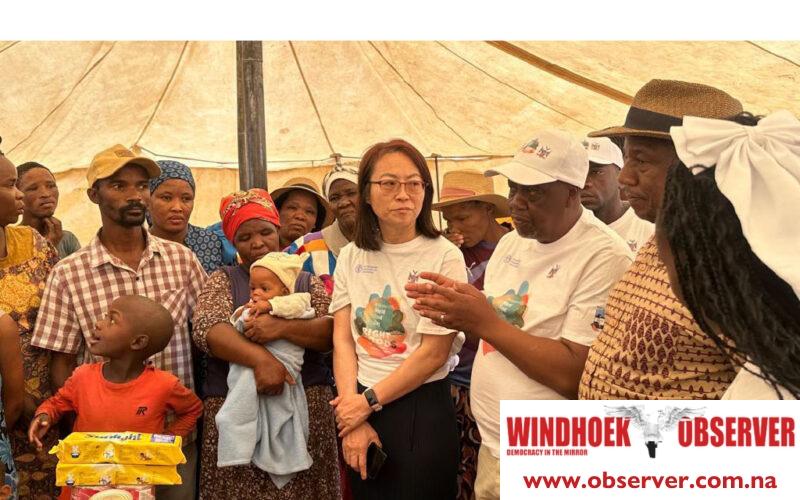Niël Terblanché
While Namibia battles the effects of climate change, global economic instability, and local challenges, the government and its partners, including FAO, are taking steps toward ensuring that no Namibian is left behind in the fight against hunger and malnutrition.
The Ministry of Agriculture, Water, and Land Reform projects that from October 2024 to March 2025, more than 1.26 million Namibians, or roughly 48% of the population, will experience high levels of acute food insecurity.
During the 2024 World Food Day commemoration in Gobabis on Wednesday, Omaheke governor Pijoo Nganate, speaking on behalf of Minister of Agriculture Calle Schlettwein, emphasized the immense challenge of ensuring food security in Namibia.
“The country’s vulnerability to recurring droughts and the global economic challenges have exacerbated food shortages,” Nganate said.
The day was commemorated under the theme “Right to Foods for a Better Life and a Better Future—Leave No One Behind.”
The event reinforced the need for collective action to tackle food insecurity, climate-induced challenges, and malnutrition across the country.
The Ministry of Agriculture, Water, and Land Reform, in collaboration with the United Nations Food and Agriculture Organization (FAO), reinforced its commitment to fostering inclusive and sustainable solutions.
Prolonged droughts have severely impacted the country’s agricultural sector, particularly in livestock-dependent regions like Omaheke, Nganate stressed.
“The depletion of pastureland and water shortages have compounded food insecurity, making the right to nutritious and affordable food a distant reality for many,” he said.
Nganate said that addressing hunger and malnutrition requires more than just food production.
“Partnerships, especially with the private sector, are crucial to ensuring that affordable and nutritious food is available to all Namibians,” he said.
The governor pointed out that the government has implemented various social protection programs, such as the Food Bank, School Feeding Program, and Water, Sanitation, and Hygiene (WASH) initiatives, as part of the Harambee Prosperity Plan II.
“These interventions aim to address not only hunger but also the broader issue of malnutrition, which disproportionately affects the country’s most vulnerable populations,” he said.
Nganate urged all stakeholders, including farmers and international partners, to continue their efforts in building a sustainable food security system.
“We must work together in solidarity to fight poverty and hunger,” he urged, acknowledging the essential role of Namibia’s farmers and the support of sponsors in the battle against hunger.
Dr Qingyun Diao, the FAO’s representative in Namibia, pointed to the stark global reality that 730 million people are facing hunger, and over 2.8 billion cannot afford a healthy diet.
“In Namibia, this resonates deeply as we witness the effects of malnutrition, stunting in children, and an increase in non-communicable diseases such as diabetes,” Diao said.
According to Diao, the FAO, in partnership with the government, has launched several initiatives aimed at transforming the country’s agrifood systems to become more inclusive, resilient, and sustainable.
Diao said that one key intervention involves promoting climate-smart agricultural practices, which aim to help Namibian farmers adapt to erratic weather patterns.
“Through conservation agriculture, farmers can maintain crop yields even during adverse conditions like drought,” Diao explained while pointing to the importance of building resilience among smallholder farmers and vulnerable households.
He also urged greater involvement from civil society and academia to ensure that efforts are science-driven.
“It is essential that businesses contribute by making diverse and healthy food options accessible,” Diao said.




